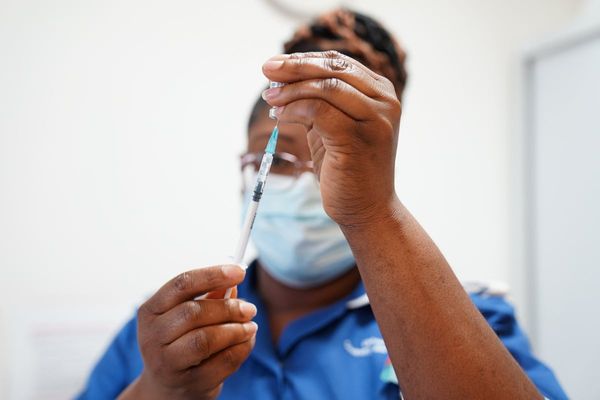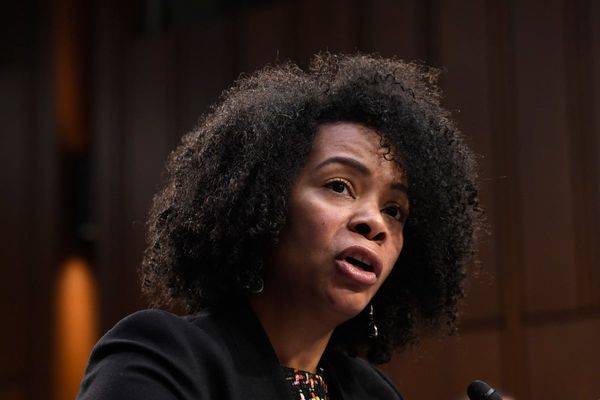
Officials at the U.N. agency that won the Nobel Peace Prize this month, the World Food Program (WFP), are worried that dwindling resources and rising needs are making it increasingly difficult for the group to meet its targets this year for feeding millions of people around the world.
The agency has said the number of people on the verge of starvation worldwide could nearly double from 135 to 265 million in 2020—mainly because of the coronavirus pandemic and ongoing wars in Yemen and elsewhere.
At the same time, money pledged by governments, corporations, and private donors has not been enough to meet even the agency’s pre-pandemic projections for spending around this year. The World Food Program derives its budget from voluntary donations—leaving it dependent on the whims of donors whose considerations are not always purely humanitarian.
“There’s much more nationalist tendencies of many of the donors where their domestic policy is affecting their foreign policy,” said Ertharin Cousin, who headed the WFP from 2012 to 2017.
The agency originally projected a budget of $7.45 billion for 2020. Donors have responded with about $6.4 billion so far. But as the coronavirus pushed millions more into poverty, the WFP estimated it would need an additional $4.9 billion to maintain operations in 83 countries—meaning it now faces a shortfall that runs into the billions.
Last year, donations to the agency surpassed $8 billion.
“We can only hope that the Nobel Prize will lead to an increase in support for WFP at the global level, as the WFP is the greatest humanitarian actor of the U.N. system,” said Carlo Scaramella, who heads the agency’s relief effort in Colombia.
Ian Hurd, a political scientist at Northwestern University, said it was basically up to the world’s richest countries to determine whether the WFP could effectively address global hunger.
“International organizations take their cues, and their funding, from the governments that control them, and the future of the WFP depends on how the largest governments choose to use it.”
In its decision to recognize the WFP, the Nobel Prize Committee described it “as a driving force in efforts to prevent the use of hunger as a weapon of war and conflict,” a reference to the agency’s work in countries like Syria, Somalia, and Yemen—where the organization helps feed nearly half the population every month.
But after six years of civil war in Yemen, a country that remains a global leader in child malnutrition and where two-thirds of the population faces food insecurity, the WFP struggles to maintain donor interest. In April the agency announced that donors had decided to scale back aid to northern Yemen because of threats from rebel forces, which would cut by half food aid to 8.5 million people in the region.
“As challenges become protracted emergencies, where there’s been a significant amount of time that has passed since that acute event occurred, donors tend to scale back their investments,” Cousin said.
Despite the cuts, Yemen remains the WFP’s largest emergency response anywhere in the world. The agency is calling for additional $500 million in funding to continue the aid.
“Unless the international community steps up with an urgent injection of funds, we are going to find ourselves right back where we were in 2018, when we had to fight our way back from the brink of a full-scale famine,” WFP executive director David Beasley said in July.
Other parts of the world have also seen a rise in food insecurity—even when war is not issue. In Latin America, often neglected by donors precisely because armed conflict is rare, the number of people who are food-insecure is expected rise threefold to 16 million this year—largely because of the coronavirus pandemic.
Miguel Barreto, WFP regional director for Latin America and the Caribbean, said the agency needs $400 million for the next six months to continue fighting the growing hunger pandemic in the region.
In Colombia, where the pandemic is combined with the second-largest migration crisis in the world, the local WFP office alone is asking for $107 million to support around 400,000 people.
Amid the pandemic, the agency transitioned from distributing large portions of aid through community kitchens to relying on food vouchers and electronic cash transfer programs. A WFP spokesperson in Colombia said it’s unclear how many people may be slipping through the cracks with this new model.
In southern Africa, where the majority of households depend on rain-fed agriculture, the climate crisis has become the main driver of starvation. In a region that has seen just two favorable growing seasons since 2012, the WFP has struggled to feed 51 million food insecure people—mostly women and children.
The unpredictable rain cycle in the region can cause flooding in some areas and droughts in others, both of which destroy crop yields.
“Each year, we forecast how we think the rain is going to fall. That lets us know how much severe hunger we can expect to have next year. That’s pretty much how we look at our work in this region,” said Brian Bogart, a regional program advisor.
In an ordinary season, the WFP sees itself as fortunate if it receives 60 percent of the funding it needs to support 12 countries in southern Africa, Bogart said. But the coronavirus has increased the funding gap. While last year it experienced a $394 million gap between October and March, this year the WFP’s shortfall is $814 million in the same period. Of the $2.1 billion the WFP has received since June, only $261 million went to the region, said Jaspal Gill, who oversees the WFP’s southern Africa fundraising efforts.
The challenges southern Africa, Yemen, and Latin America face in raising money is tied in part to the WFP’s funding model, which allows donors to contribute either through earmarked or flexible spending. Major donors, including the United States, the European Commission, and the United Kingdom often earmark their donations. Unless significant events take place in these regions—wars or natural disasters, for example—they’re often neglected.
“It’s always been a bit of a challenge getting visibility unless, you know, we get a cyclone or some of the larger, more complex emergencies,” Gill said.
Despite these challenges, the WFP continues to feed 138 million people worldwide, and officials are hopeful the Nobel Prize will help bring the organization more attention—and more needed money.
“It’s kind of the best call to action that you could possibly get. It shone a spotlight on the millions of people around the world who are facing hunger as a result of conflict,” WFP Yemen Spokesperson Annabel Symington added.







